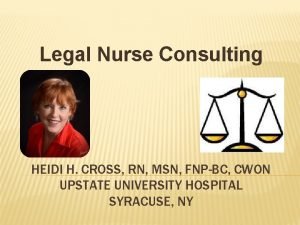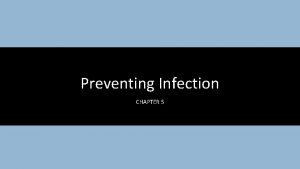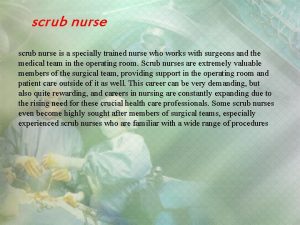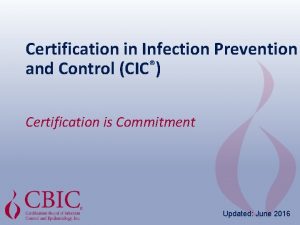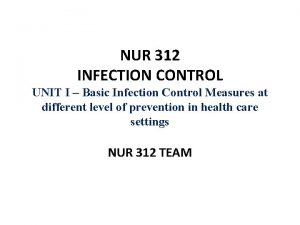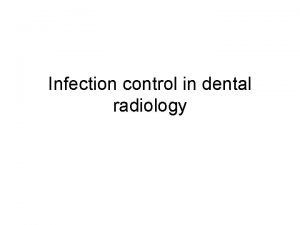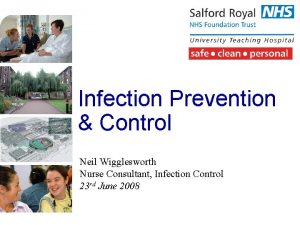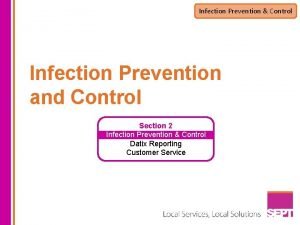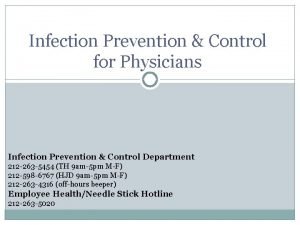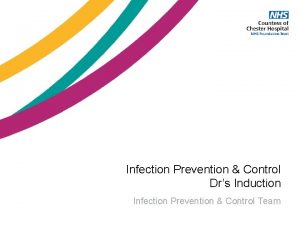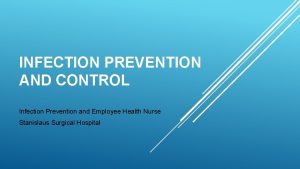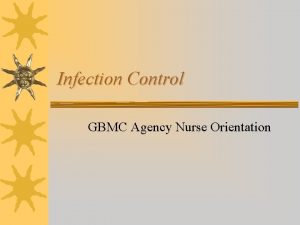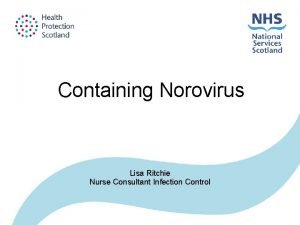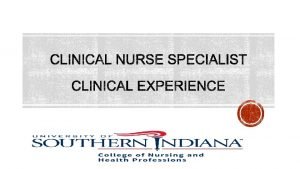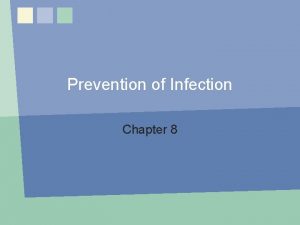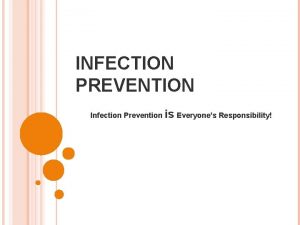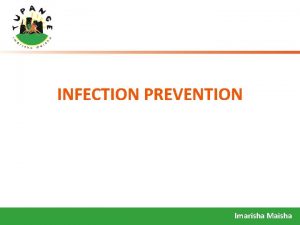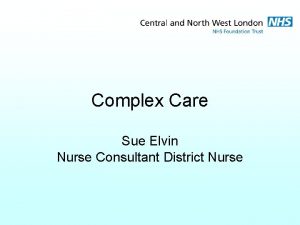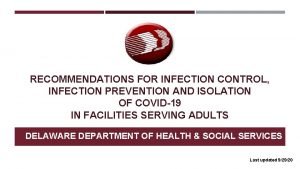Infection Prevention and Control Jo Lickiss Nurse Consultant

















- Slides: 17

Infection Prevention and Control Jo Lickiss Nurse Consultant Infection Prevention and Control

Health Care Associated Infections n Are infections that are acquired in hospitals or other health care settings as a result of healthcare interventions. There a number of factors that can increase the risk of acquiring an infection, but high standards of infection prevention and control practice minimise the risk of occurrence. n Most are caused by the patients own micro-organisms n The widespread use of antibiotics to treat infection, particularly in hospitalised patients, encourages antibiotic-resistant microorganisms to emerge. These can cause infections that are more difficult to treat. n Caring for many patients together in hospitals provides opportunities for micro-organisms to spread between patients

What is MRSA Bacteraemia? MRSA found in blood & grown in blood specimens n Reportable to the Department of Health n Annual Trajectories are set between Trust & PCTs n 2007 – 2008 BFW NHS Foundation Trust set at 26 n

Where we were - MRSA Bacteraemia n 2007/2008 MRSA Bacteraemia – Target of 26 – Performance 40


Where we are now n 2008/2009 MRSA Bacteraemia Target - 26 – April - 0 – May - 1 Pre 48 hr – June - 1 Pre 48 hr – July - 1 Acute Trust – August - 1 Acute Trust – September – 1 – Contaminant – October – 2 – Acute Trust – November – 1 Blackpool PCT – December - 0 Total = 8


Initiatives in place to reduce MRSA n n n n n MRSA universal screening elective and emergency Decolonisation of known positive patients on admission PCR Testing –Medical and Surgical Emergency admissions – 6 month trial – now adopted permanently Reviewed MRSA policy MRSA care pathway Quarterly Audits – Compliance with MRSA Policy, Screening and Treatment A positive MRSA B/C instigates a full inspection Incident meeting with relevant Division – Senior Nursing and Medical involvement – Action Plan formulated Lessons Learnt feedback

Clostridium Difficile n First identified in 1935 n 2004 mandatory surveillance was instigated for people over 65 with CDAD n 2007 all patients over the age of 2 with CDAD must be reported n Annual trajectory set between Acute Trust and PCTs



Clostridium Difficile Patients most at risk n Elderly patients n Prolonged hospital stay n Immuno-suppressed patients (increased susceptibility to infection) n Numerous courses of antibiotics – destroys normal gut bacteria – Clostridium Difficile can flourish n Poor diet or assisted feeding n Carried in the bowel of 3% of healthy people

Measures to reduce Clostridium Difficle n n n n Whole Health Economy approach Antibiotic prescribing in the community impacts on patients in the hospital and vice versa Antibiotic formulary 48 hour/5 day stop policy Education and awareness Emphasis on environmental and equipment cleaning Close working relationship with the Domestic Service provider Visiting other Trusts who have reduced their rates – Cohort Ward, changing cleaning product on the ward.

Initiatives in place to reduce all HCAI n n n n Board to Ward engagement Letter to all staff detailing commitment to Infection Prevention and Control and for individuals to sign and return to manager. Mandatory Infection Prevention road shows Organisational change in culture Performance Management of Divisions in regards to Infection Rates and Hand hygiene compliance. ‘Ban the Bug’ Campaign Desktop caption “ 40 days since last Bacteraemia. Have you washed your hands”.

Initiatives in place to reduce HCAI (cont) n n n n Quarterly Saving Lives Audits (Do. H) ANTT (Aseptic Non Touch Technique) project commenced April 2008 – over 900 staff trained – all disciplines ‘Bare below the elbows’ (Do. H) Weekly Hand Hygiene Audits Change of shape of catheter bags – landscape to portrait. New Intravenous line insertion packs Increase in the Infection Prevention and Control Team.

Infection Prevention and Control Team July 2008 Nurse Consultant n Senior Clinical Nurse Specialist n Infection Prevention Nurse x 2 n Consultant Microbiologists x 2 n Now n New Infection Prevention Nurse n Audit and Surveillance Nurse n Information and Data Analyst Post Additionally n 4 New Pharmacists appointed

Conclusion No one measure has succeeded in reducing Health Care Associated Infections in the Trust n There has been a change of culture across the Organisation which continues to be embedded n Each new measure introduced has had an impact and it would be difficult to pinpoint one individual measure as the main cause n Need to continue the work – this is not for the short term. n
 Primary prevention secondary prevention tertiary prevention
Primary prevention secondary prevention tertiary prevention Chapter 16 infection control and standard precautions
Chapter 16 infection control and standard precautions Puncture resistant container
Puncture resistant container Chapter 19 disease transmission and infection prevention
Chapter 19 disease transmission and infection prevention Chapter 19 disease transmission and infection prevention
Chapter 19 disease transmission and infection prevention Legal nurse consultant websites
Legal nurse consultant websites Define infection prevention chapter 5
Define infection prevention chapter 5 Scrub nurse role
Scrub nurse role Chapter 16 infection control and standard precautions
Chapter 16 infection control and standard precautions Nonpathogenic bacteria are milady
Nonpathogenic bacteria are milady Cbic recertification
Cbic recertification Nurse logic ati
Nurse logic ati Labial mounting
Labial mounting Chapter 15:3 washing hands
Chapter 15:3 washing hands Chapter 15:7 cleaning with an ultrasonic unit
Chapter 15:7 cleaning with an ultrasonic unit Cic exam certification
Cic exam certification Infection control definition
Infection control definition Darkroom infection control guidelines
Darkroom infection control guidelines





